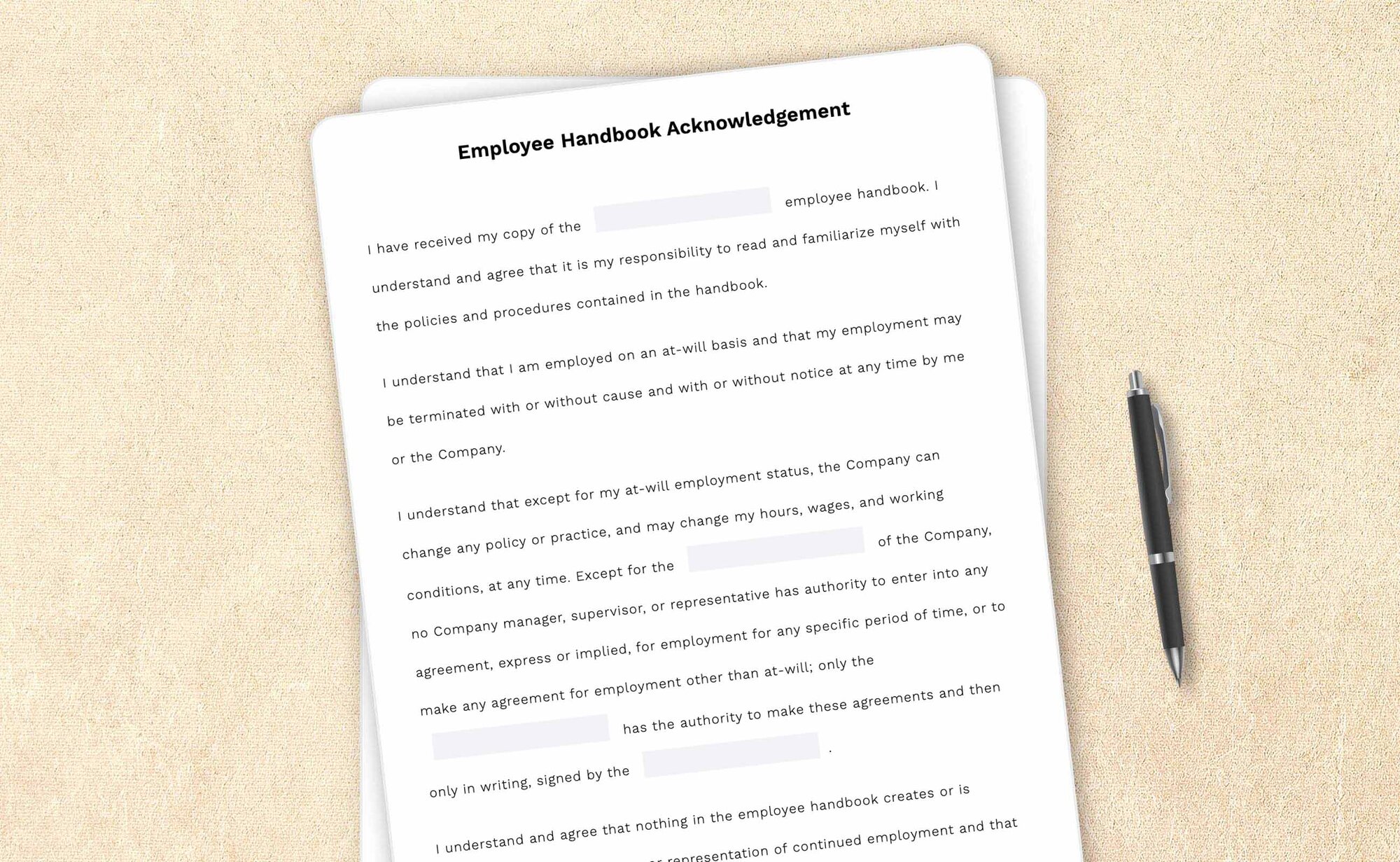I have received my copy of the
I understand that I am employed on an at-will basis and that my employment may be terminated with or without cause and with or without notice at any time by me or the Company.
I understand that except for my at-will employment status, the Company can change any policy or practice, and may change my hours, wages, and working conditions, at any time. Except for the
I understand and agree that nothing in the employee handbook creates or is intended to create a promise or representation of continued employment and that employment at the Company is employment at-will. Employment may be terminated at the will of either the Company or me. My signature certifies that I understand that the foregoing agreement on at-will status is the sole and entire agreement between the Company and me concerning the duration of my employment and the circumstances under which my employment may be terminated. It supersedes all prior agreements, understandings, and representations concerning my employment with the Company.
| Signature: _____________________________________________ | |
Printed Name: __________________________________________ |
Date: ________________________________ |
How-to guides, articles, and any other content appearing on this page are for informational purposes only, do not constitute legal advice, and are no substitute for the advice of an attorney.
Employee handbook acknowledgment form: How-to guide
Employee handbooks inform employees about company policies, procedures, and practices and can communicate standards of performance and conduct. Sometimes, they’re a new employee’s first inside impression of a company. If well-constructed, the employment relationship can start off on the right foot.
Why is an employee handbook essential?

Employees are among a company's most valuable resources and can contribute substantially to its success. On the contrary, poor employee performance or behavior can decrease product quality, customer satisfaction, and commercial achievement. Managing employee behavior is essential to a company’s growth and longevity, and a written employee handbook is a key component of that management.
What's an employee handbook acknowledgment?
An employee handbook provides new employees with official and practical information on the company’s rules and policies. Have your employees sign and acknowledge a company’s employee handbook acknowledgment form to ensure they have read and understand those rules. This can prevent future disagreements and misunderstandings and build the framework for a long-lasting employment relationship.
Why is an employee handbook acknowledgment form important?
An employee handbook acknowledgment form offers legal protection. It prevents employees from arguing that they didn’t know about your company’s at-will employment policies.
It’s a good idea to save time during the onboarding process for your employee to read the handbook or to provide an extra thirty minutes at a break during the first week for this specific purpose.
Although state and federal laws sometimes require that policies and procedures be posted on bulletin boards as official notices or other public places in the office, distributing a handbook to all employees ensures that the company’s critical standards are accessible. Each employee will have this handy reference when questions arise.
The acknowledgment form should be included at the beginning of the employee handbook. If your employees are aware of its importance, this can ensure that they actually read it.
Who is in charge of revising the handbook?

Company policy statements aren’t set in stone and change over time. Follow these instructions while revising a handbook:
- Add the person with the authority to change the contracts or alter an employee's employment-at-will status. This will usually be a manager from your company's human resources department.
- Using the person’s title is more beneficial than adding their name, as it’ll limit future revisions of your handbook.
- Employee handbook revisions can eliminate existing policies. Hence, keep copies of each handbook revision.
- After every handbook revision, it is essential to update the employee about the significant changes and get the employee's signature on the acknowledgment form with the revised information.
How do you write an employee acknowledgement form?
To create an effective employee handbook acknowledgment form, customize it by adding the following details:
- The company name issuing this handbook.
- An acknowledgment statement stating that employees have read, understood, and agreed to the terms written in the organization’s handbook.
- The acknowledgment form should clarify that the handbook is subject to change without notice, and the employees will be updated about the changes.
- State that the acknowledgment form is neither a contract of employment nor an employment agreement. The employee handbook should maintain the status of employment agreements unchanged.
- The acknowledgment form should include spaces for the employee's name, date, and signature. Make several copies of the signed acknowledgment and give one to the employee at the end of your discussion. Place an additional signed copy in that employee’s personnel file.
What if an employee refuses to sign the acknowledgment form?
If an employee declines to sign the employee handbook acknowledgment form, it could be because they’re confused about what they’re agreeing to or because the information in the handbook is outdated or incorrect. In such a case, it's best to have a one-on-one meeting with the employee to listen to their concerns and resolve the issue amicably.
If an employee refuses to sign an acknowledgment form, you can request the employee to sign a form indicating that they disagree with the employee handbook. However, this form must clearly state that your organization will continue enforcing the policies and disciplinary actions outlined in the employee handbook, even if the employee disagrees. It is recommended that a supervisor serve as a witness to the signature of this document to ensure that the process is documented properly.
